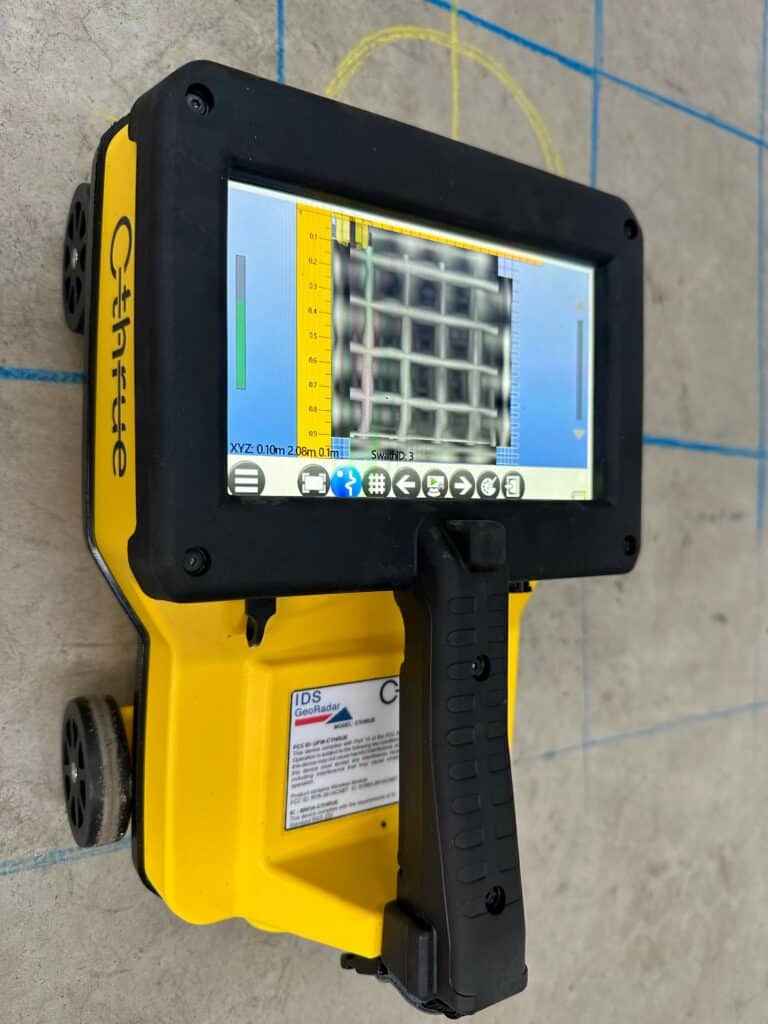Beyond the Surface Area: Leveraging Advanced Concrete Scanning Techniques for Unmatched Precision and Understanding
In the world of construction and facilities maintenance, the pursuit for accuracy and thoroughness is incessant. Advanced concrete scanning strategies have arised as crucial devices in this quest, offering a glance below the surface area to unveil a world of critical understandings. By utilizing advanced technologies, specialists can uncover abnormalities, analyze the problem of concrete structures, and make notified choices that form the program of projects. The implications of these techniques prolong much past plain surface-level assessments, promising a depth of accuracy and understanding that is exceptional.
Significance of Advanced Concrete Scanning
The value of making use of advanced concrete scanning strategies depends on the unparalleled accuracy they use for detecting sub-surface abnormalities and ensuring architectural integrity. By utilizing sophisticated modern technologies such as ground-penetrating radar (GPR), electro-magnetic induction, and progressed finder imaging, building professionals can dig below the surface area of concrete structures with a level of precision that far surpasses standard examination techniques. Concrete Scanning. These strategies allow the recognition of concealed hazards like rebar deterioration, spaces, avenues, or post-tension cable televisions that might jeopardize the security and safety of a structure gradually
Moreover, progressed concrete scanning provides invaluable insights right into the general problem of a concrete element without the requirement for invasive procedures, minimizing the danger of creating damage throughout the analysis procedure. The capacity to determine the precise location and deepness of prospective issues enables for targeted fixings and maintenance, inevitably extending the life-span of the structure and optimizing its performance. Basically, the relevance of advanced concrete scanning can not be overstated in the realm of building and construction and facilities maintenance, where precision and reliability are critical.
Kinds Of Cutting-Edge Technologies

Abnormalities and Issue Detection

Along with GPR, concrete scanning strategies like thermography and impact-echo screening are also effective in detecting issues and abnormalities. Thermography makes use of infrared modern technology to determine variants in surface area temperature, showing prospective locations of concern such as delamination or dampness access. On the various other hand, impact-echo testing includes assessing acoustic feedbacks to discover gaps, cracks, and various other issues Discover More within the concrete. By leveraging these innovative strategies, professionals can proactively resolve structural concerns, ensuring the longevity and safety of concrete frameworks.
Assessing Concrete Problem
Exactly how can engineers properly evaluate the problem of concrete frameworks to ensure their longevity and security? Numerous advanced concrete scanning methods are utilized for this objective. Ground-penetrating radar (GPR) is typically utilized to analyze the internal structure of concrete, finding voids, cracks, and other abnormalities that may compromise its stamina.
Integrating non-destructive screening approaches with aesthetic examinations allows for a comprehensive examination of concrete condition, enabling engineers to determine prospective problems early on and execute timely maintenance or repair work. By leveraging these advanced techniques, designers can ensure the lasting longevity and safety and security of concrete structures.
Enhancing Decision-Making Processes
In the world of infrastructure management, optimizing decision-making processes is imperative for making certain the efficient upkeep and long life of concrete frameworks. Improved decision-making processes in concrete monitoring involve using advanced scanning methods to collect in-depth data on the condition of structures. By leveraging modern technologies such as ground-penetrating radar and 3D imaging, stakeholders can make enlightened choices concerning replacement, repair service, or reinforcement strategies.
These progressed scanning techniques supply important understandings into the interior structure of concrete, identifying potential concerns such as gaps, cracks, or rust that may not be noticeable on the surface area. This level of thorough info enables aggressive upkeep planning, reducing the threat of architectural failures and boosting the overall life-span of concrete structures.
Furthermore, by integrating electronic documentation and evaluation tools right into the decision-making process, stakeholders can track the advancement of concrete conditions in time, allowing anticipating maintenance methods and optimizing resource allotment. Eventually, the combination of sophisticated concrete scanning methods improves decision-making procedures by supplying unequaled accuracy, insight, and efficiency in infrastructure administration.
Final Thought
Finally, progressed concrete scanning methods use unequaled precision and understanding in finding abnormalities, defects, and assessing the problem of concrete frameworks. By leveraging advanced technologies, decision-making processes can be enhanced, leading to more effective and educated services for maintaining and fixing concrete framework. These strategies play a crucial role in guaranteeing the security and long life of concrete frameworks, making them a vital device in the field of building and construction and design.
Furthermore, progressed concrete scanning provides important insights into the overall problem of a concrete component without the requirement for find out invasive procedures, reducing the site web danger of triggering damage during the evaluation procedure - Concrete Scanning. An additional ingenious modern technology is 3D X-ray scanning, which supplies thorough photos of the inner framework of concrete, supplying beneficial details without the requirement for destructive screening. Furthermore, Concrete Cover Meters are utilized to determine the thickness of concrete cover over reinforcement bars accurately. Boosted decision-making procedures in concrete monitoring involve making use of sophisticated scanning strategies to gather thorough information on the problem of frameworks.In final thought, advanced concrete scanning techniques use exceptional precision and understanding in finding abnormalities, problems, and evaluating the condition of concrete frameworks